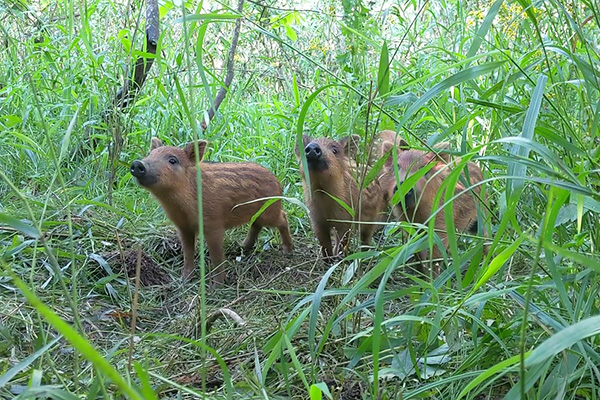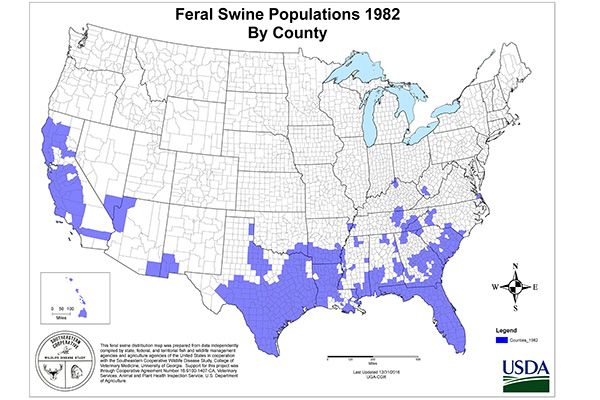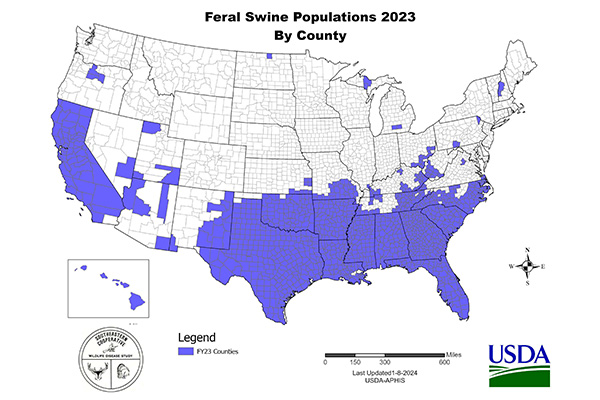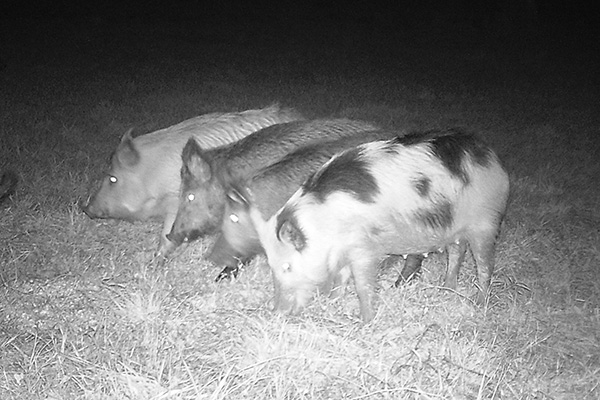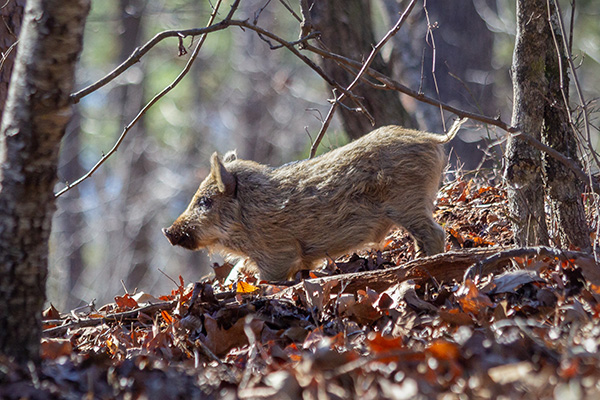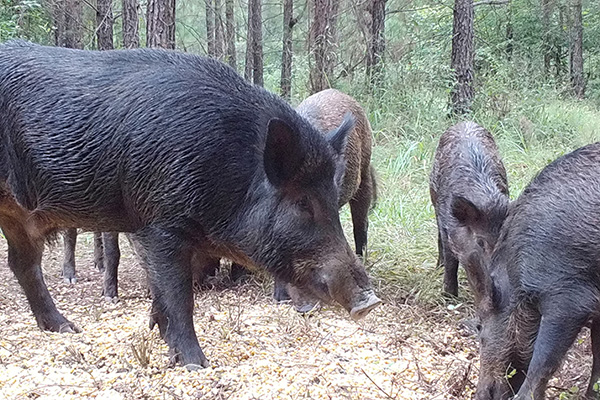There are many ways to determine if hogs are nearby. These signs can help determine if hogs are present on any given landscape without seeing the hog itself. Hogs can be very elusive and cautious, so looking for signs of them may be a better option.
Rooting
Hogs will often feed on plant material under soil. To get to that material hogs must dig down to access it. This behavior leaves the ground disturbed and often leaves the soil exposed. Look for upturned dirt and leaves.
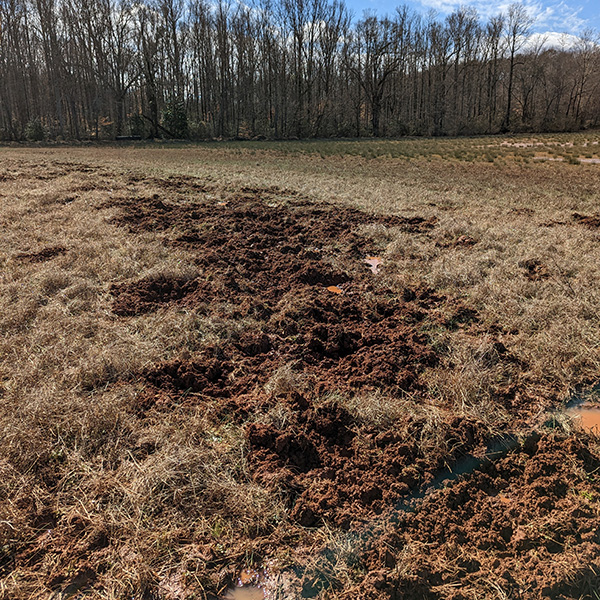
Rooting from pigs in a field in Pickens County, SC. (Photo by Andrew Jamison)
Wallows
Wallows are depressions in the ground that are usually filled with muddy water. Wallows can be caused by the rooting behavior. Hogs use these to cool off and protect themselves from parasites or insects. Wallows are usually in shaded, wet areas. Look for wallows along creeks, trails, or near standing water.
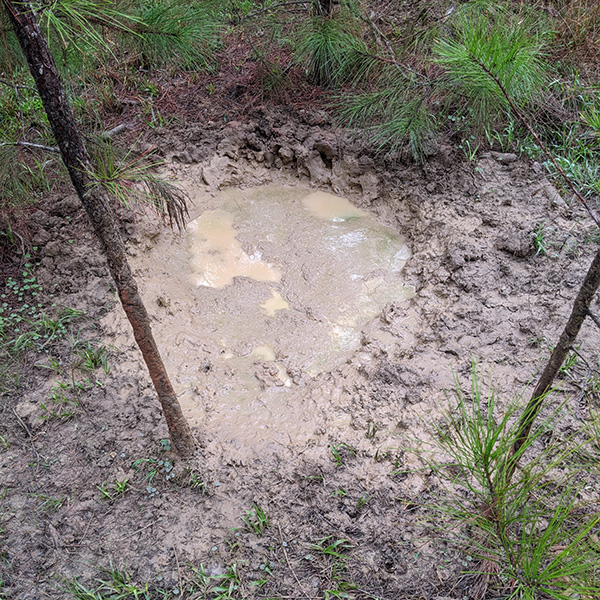
Pig wallows are often muddy holes in the ground that contain water. (Photo by Andrew Jamison)
Rubbing
Hogs will rub their body on upright objects to remove mud, hair, and parasites. These rubs can often be observed on trees. Look for mud on trees and hog hair.
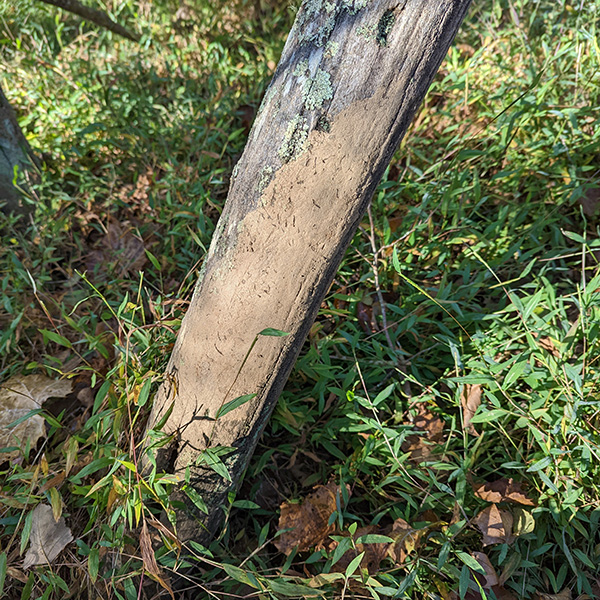
Pig rubs are usually in the form of mud stuck to the side of a tree. (Photo by Andrew Jamison)
Tusking
Hogs will rub their tusks on trees to expose the sap and rub the sap on their body as a deterrent for ticks and lice. In some cases, this can lead to the death of the tree.
Beds
Much like deer, hogs will bed down to rest. They will dig down to the soil and sometimes line their beds with plants. Look for beds on ridges or in areas with dense cover. Hogs will bed close to each other.
